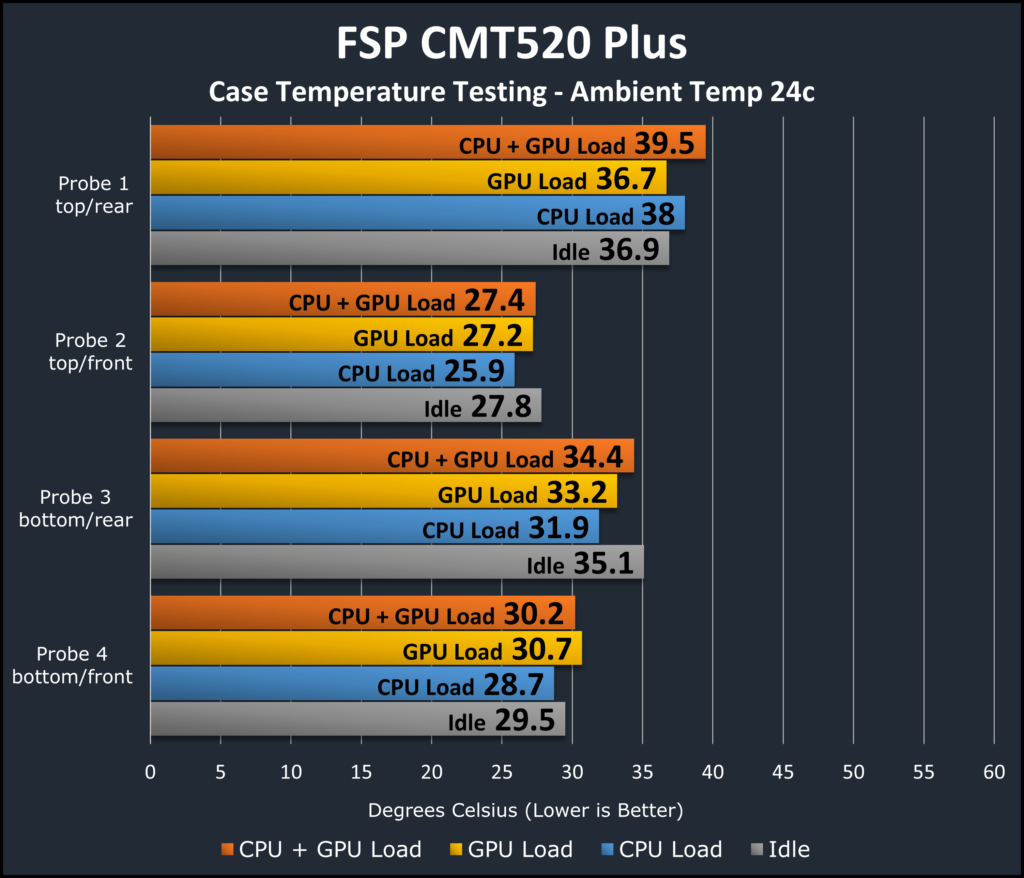Case Benchmarks
Noise Level
The noise level testing is straightforward and consists of three readings. The three readings are a baseline with nothing running, 10 minutes after the system has fully booted into Windows, and finally, peg the system at 100% on the CPU and GPU and record those readings after 10 minutes.

The sound levels on this case are interesting. Since the case fans are plugged into the PSU directly there is no throttling of the case fans when under load or idle. So the fans run 100% RPM at all times. This translates to a 9.6 dB increase in noise when the system is powered on. With both the CPU and GPU under a 100% load you see an additional .4 dB increase in noise. While not the quietest case I’ve reviewed it’s not overly loud either.
Thermal Dissipation Testing
This will be a 4-part test. I will test the system at idle, CPU only, GPU only, and CPU + GPU loads. There are 4 probes I place inside the case. top/rear, top/front, bottom/rear and bottom/front. The top/rear is located directly behind the CPU tower cooler. The bottom/rear is located just below the GPU. The two front probes are at the same level as the rear but located towards the front of the case.

Ambient temperature of the room was 24C during testing.
This is an interesting graph to look at here. The idle temperatures are actually slightly higher than the CPU load temperatures. I suspect this is due to the fact that the case fans are running 100% intake at the front at all times. During a CPU load, the heatsink fan on the CPU revs up to cool the CPU and with the orientation of the CPU cooler, it is blowing the air out the back of the case. This helps suck all the air out of the case with the positive pressure caused by the 3 intake fans.
Overall though this case runs very cool. When the system is under a full load both the CPU fan and the GPU fans are helping dissipate the air out of the case. Those 3 fans at the front seem to do a good job at handling the cool intake air coming in while the CPU and GPU fans help expel the air out.
